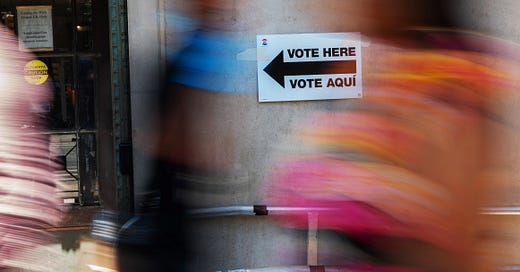
1. Vibes
Most analysis at this point is quantitative. We’re looking at the polls. We’re trying to figure out if Donald Trump has a 45 percent or a 55 percent chance to win. This is an impossible task with an unfalsifiable answer and so we worry over it. Endlessly.
And I’m going to get to that quant stuff in a minute. But first, let’s take a step back and look at the campaign qualitatively: Pretend that the polls really have shifted a touch in Trump’s favor over the last six weeks. Why would that have happened?
Who had a better convention and got a larger convention bounce? Kamala Harris.
Who won the debate? Harris.
Has the final economic data been good or bad? It’s been very good.
Who has gotten big, historic endorsements down the stretch from members of the opposing party? Harris.
Who has campaigned with more energy and vigor? Harris.
Who has canceled interviews, lost his place on stage, and looked mentally and physically lost? Trump.
Who has been blindsided by a last-minute scandal? Trump.
Point is: If you lived through the last six weeks without being allowed to see any polls and I told you that Harris had moved to +7, you’d think that this number made sense.
It doesn’t make sense that Trump has ticked up a point during this period.1 So we hunt around for rationalizations to explain what is, at root, not qualitatively explicable.2
Now let’s get to the quantitative stuff, because people have an exaggerated sense of how much variance there is in presidential elections. The reality is:
Republican and Democratic candidates perform about the same from year to year.
The extent to which R and D vote shares vary is largely dependent on third-party candidates.
We already know to within a point or two where Harris and Trump are likely to end up.
Today I’m going to make the case that we don’t (and can’t) know the outcome of the campaign. But we know more about the likely result than we realize.
And the result is likely to be that a majority of voters will choose Harris.
Let’s dive in.




